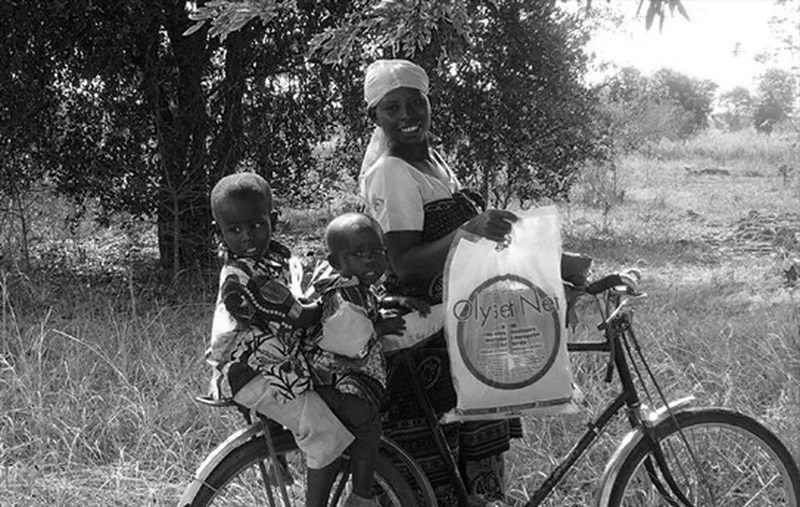Insight: What is the Average Life Expectancy in Tanzania?
Tanzania is host to Africa’s tallest mountain and borders Africa’s deepest reservoir, but it also houses Eastern Africa’s highest population, which is still battling to achieve adulthood. According to the UN, Tanzania boasts the world’s greatest youthful population in recent history. If nurtured with correct programming support, it might result in remarkable societal advancement and growth as the entire population ages.
However, surviving adolescence and keeping healthy are key concerns for the aging United Republic of Tanzanian population with a low life expectancy. High child mortality and innocent lives lost to treatable diseases are caused by a lack of excellent health facilities as well as poor sanitation. International assistance is supporting local and state-sponsored projects to address the majority of the pressing concerns affecting Tanzania’s life expectancy, but additional assistance is needed. These issues and other difficulties are presented in the paragraphs below in the form of ten facts regarding Tanzanian life expectancy.
Ten True Pieces of Data Providing Further Details on What is the Life Expectancy In Tanzania
- Life expectancy in Tanzania has improved by nearly ten years in the last decade. As per the latest data, Tanzanians are anticipated to live to be approximately 66 years old, up from 57 years old in the 2000s. Socio-economic development through higher earnings, employment, as well as more education are all variables that contribute to this achievement.
- In Tanzania, about 20% of deaths could be avoided if surgical care was available. The Tanzanian authority recognizes the need for improved access to health care. It has created the Obstetric, National Surgical, and Anaesthetic Plan, which aims to improve anesthesia, obstetric, and surgical services by the beginning of 2025.
- Malaria is the primary factor of hospitalization and mortality among Tanzanian children, as well as one of the major causes of death overall. The malaria epidemic in Tanzania has prompted the MDGs [Millennium Development Goals] and the RBM [Roll Back Malaria] Partnership to provide years of solution-powered support as well as strategic monitoring. Both efforts have contributed to the reduction of this preventable illness, allowing Tanzanian youngsters to live longer lives.

A Tanzanian village woman with her kids holding a Malaria net for prevention - Daily, two hundred and seventy Tanzanian children as young as five die as a result of avoidable diseases like pneumonia, diarrhea, and malaria. The high levels of infant mortality show the necessity for a robust healthcare system and good service delivery. However, because of coordinated efforts from Tanzania’s authorities and foreign help, the childhood death rate is increasing and has reduced by about 50% since the 90s.
- All essential vaccines have been received by 75% of Tanzanian children. Tanzania is committed to child health security, with average global vaccination coverage of 85 percent. The discrepancy across regions is a major impediment to increased coverage. Childhood vaccination has been a significant factor in a two-thirds reduction in infant mortality rates since 2000, thanks to international relief efforts such as those of the USAID [United States Administration for International Development].
- Tanzanian kids born to uneducated mothers are 1.3 percent more prone to die before reaching the age of five than kids born to educated mothers. Furthermore, in Tanzania, adolescent women who haven’t had any access to school are 5 % more prone to become mothers than their counterparts who have completed secondary and higher education. Launching a Leader, a program run by the GEC [Girls Educative Collaborative] that prepares young ladies for secondary education, helps break down obstacles, and increases access to continued education for every young woman.
- Two-thirds of all females in Tanzania give birth in a hospital where a qualified practitioner is present. The presence of a birth attendant reduces the risk of maternal death during delivery increasing the rates of life expectancy in Tanzania.
- 27 million Tanzanians do not have access to potable water, and thirty-five million rely on inadequate sanitation. Kids and rural populations are particularly affected by these poor sanitation and water situations. But there is reason to be optimistic. Utilizing digital finance as well as the industry’s WaterCredits initiative, organizations such as Water.org have begun to tap into Tanzania’s existing network infrastructure to enhance the nation’s sanitation and water systems.
- Tanzania is among the lowest doctor-to-population ratios countries in the world. As per the WHO [World Health Organization], there are a total of three doctors, nurse-midwives, and nurses for every ten thousand citizens. With a total number of residents of more than fifty million inhabitants and a required minimum of twenty-three providers per 10,000 persons in low-income nations, these figures reveal a large healthcare coverage gap. One USAID initiative has trained more than 500 healthcare providers in over 400 facilities to meet key needs in conjunction with the Tanzanian government.
- The AIDS disease in Tanzania is well-managed, with about 1.5 mill Tanzanians infected and living with HIV. Tanzania’s widespread use of antiretroviral drugs has helped reduce the effects of the country’s HIV/AIDS epidemic during the previous decade and increased life expectancy.
The ten statistics about the average life expectancy in Tanzania shown above highlight the good effects of government and global solutions on Tanzania’s people while also highlighting places for further development. Malaria is a major impediment to Tanzania’s socio-economic growth as well as foreign investment, and the government failed to reach its MDGs [Millennium Development Goals] for infant and maternal deaths in 2015. Tanzania is on pace to succeed with the right help. The nation’s future appears to be brighter [and aged] now than it was a decade ago.
Here is also a recap of the recent years life expectancy in Tanzania data:
- Life expectancy in Tanzania 2022 – Datacommons.org Tanzania
- Life expectancy in Tanzania 2021 – Datacommons.org Tanzania
- Life expectancy in Tanzania 2020 – Datacommons.org Tanzania
- Life expectancy in Tanzania 2019 – Datacommons.org Tanzania
For more articles related to Health in Tanzania, click here!

































